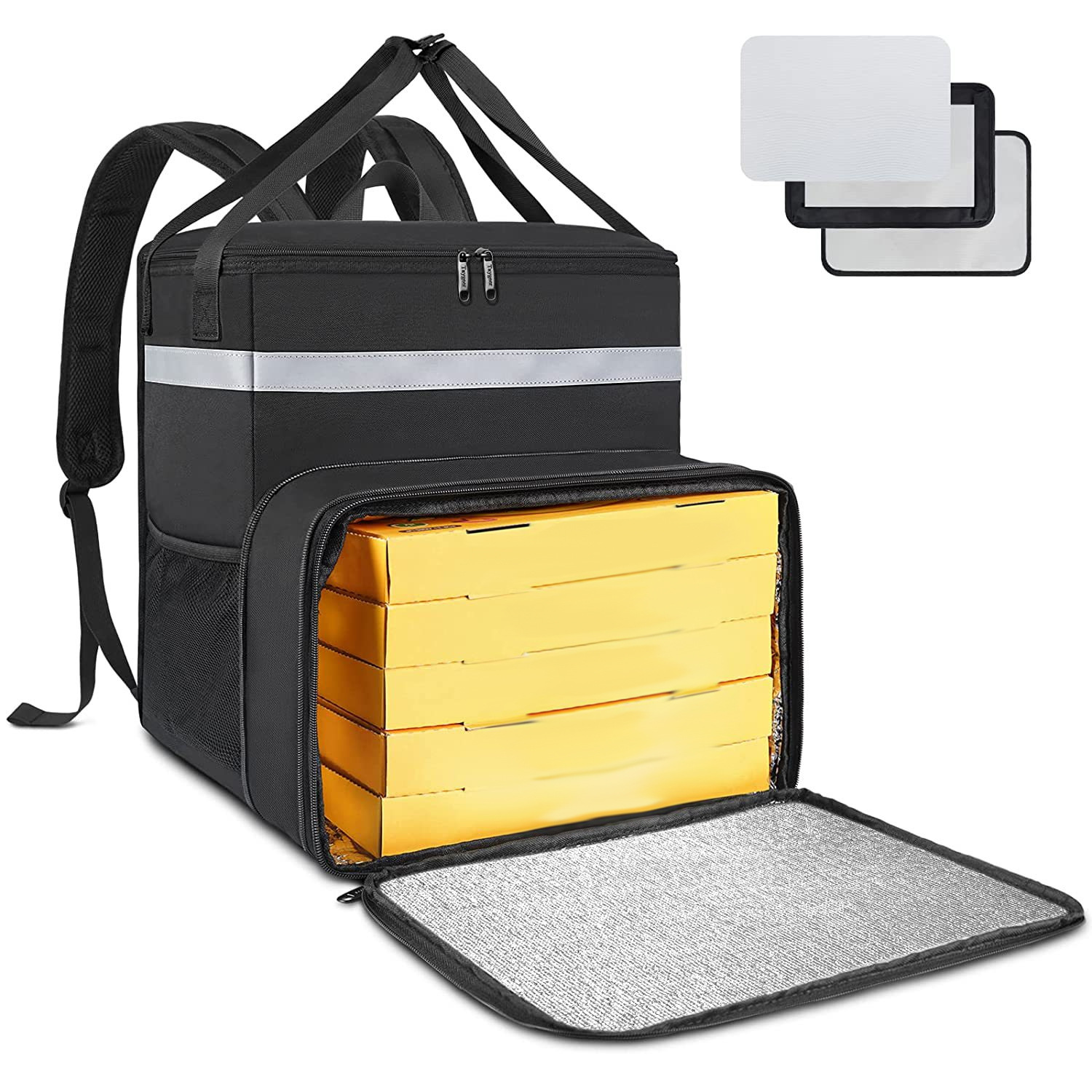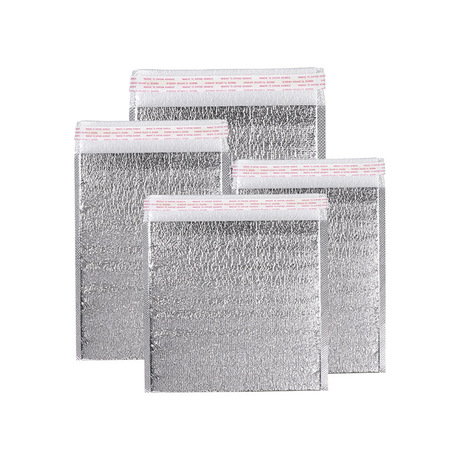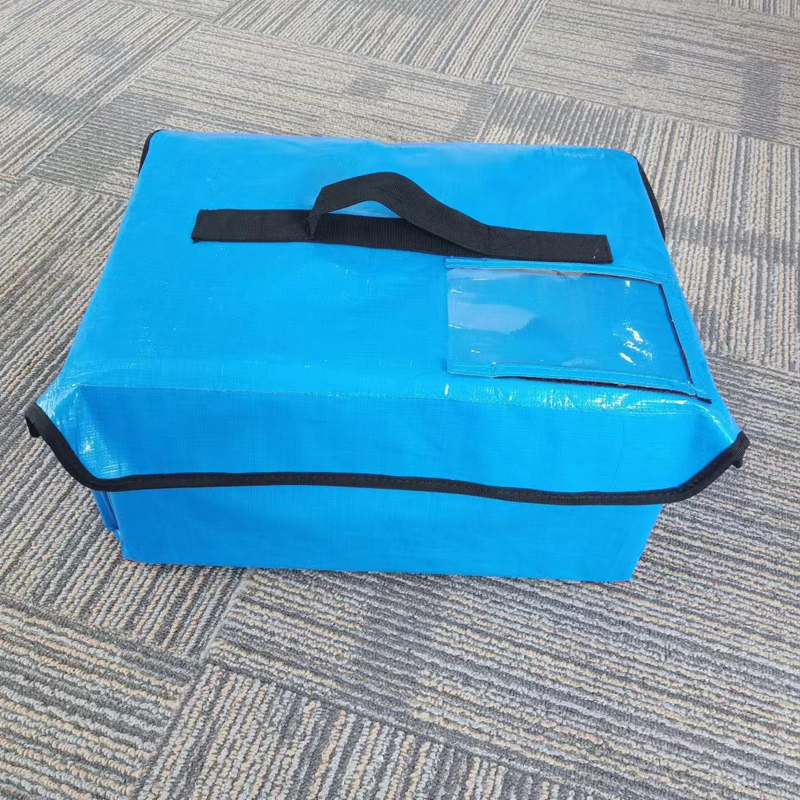Berjuang dengan es krim leleh di musim panas yang terik? Minuman seperti cola dan bir berubah menjadi minuman panas? Atau mungkin minuman panas dan makanan beku makanan padat di angin musim dingin yang menggigit?
Huizhou Industrial telah menyusun panduan tentang cara mengelola kebutuhan isolasi. Apakah Anda merencanakan perjalanan luar ruangan yang singkat atau ingin menjaga bahan makanan Anda pada suhu yang tepat, Hari ini kami merekomendasikan solusi yang nyaman - kantong termal.
Saat memilih kantong termal yang tepat, Anda dapat membuat pilihan berdasarkan jenis yang tersedia dan kebutuhan spesifik Anda.
Saat ini, Berbagai supermarket, toko teh, Toko roti, dan restoran menawarkan berbagai macam kantong termal. Tas -tas ini umumnya termasuk dalam kategori berikut:
- Kantong termal aluminium foil: Lapisan dalam terbuat dari aluminium foil, sedangkan lapisan luar biasanya kain non-anyaman atau kain oxford. Ini cocok untuk pelestarian jangka pendek dari makanan beku, seperti untuk berbelanja sehari-hari atau transportasi jarak pendek. Foil aluminium mencerminkan radiasi panas, secara signifikan mengurangi perpindahan panas dan secara efektif menjaga suhu internal.
- Tas Termal Katun Mutiara EPE: Menampilkan lapisan dalam dari kapas mutiara EPE dan lapisan luar dari kain bukan tenunan atau poliester, tas ini ideal untuk transportasi jarak jauh dan logistik rantai dingin. Kapas mutiara EPE menawarkan isolasi dan bantalan yang sangat baik, sehingga cocok untuk kebutuhan termal jangka panjang.
- Tas Termal Busa PU: Ini memiliki lapisan dalam busa PU dan lapisan luar biasanya terbuat dari PVC atau nilon. Mereka sempurna untuk situasi yang memerlukan kinerja insulasi tinggi, seperti transportasi rantai dingin farmasi dan pengiriman makanan beku kelas atas. Busa PU berdensitas tinggi memastikan retensi termal yang unggul.
- Tas Termal Kain Non-Anyaman: Lapisan dalam bisa berupa aluminium foil atau kapas mutiara EPE, dengan lapisan luar kain bukan tenunan. Ini cocok untuk penggunaan rumah tangga sehari-hari dan perjalanan belanja singkat, menjadi ringan, portabel, dan menawarkan isolasi moderat.
- Tas Termal PVC: Lapisan dalam biasanya aluminium foil atau kapas mutiara EPE, dengan lapisan luar PVC. Ideal untuk kegiatan di luar ruangan seperti piknik dan berkemah, tas ini tahan air, tahan kelembaban, dan tahan aus, memberikan isolasi yang baik.
- Tas Katun Termal: Dengan lapisan dalam dari alumunium foil atau kapas mutiara EPE dan lapisan luar dari kain katun, tas ini cocok untuk kebutuhan pengawetan makanan beku yang lebih ringan, seperti penyimpanan rumah tangga dan dibawa sehari-hari. Mereka bergaya, dengan perasaan nyaman.
- Tas Termal Kain Oxford: Ini menampilkan lapisan dalam dari aluminium foil atau kapas mutiara EPE dan lapisan luar dari kain Oxford. Ideal untuk situasi yang membutuhkan daya tahan, seperti transportasi jarak jauh atau sering digunakan, Kain Oxford tahan aus dan tahan sobek, dengan kinerja termal yang baik.
- Tas Termal TPU: Dengan lapisan dalam berbahan TPU dan lapisan luar berbahan nilon atau polyester, tas-tas ini sempurna untuk transportasi rantai dingin dengan permintaan tinggi. Bahan TPU menawarkan ketahanan dan fleksibilitas suhu rendah yang sangat baik, sehingga cocok untuk kondisi ekstrim.
- Tas Termal Bahan Komposit: Ini terbuat dari kombinasi bahan, seperti busa PU dan aluminium foil di bagian dalam, dengan kain Oxford atau PVC di bagian luar. Tas ini cocok untuk situasi yang memerlukan kinerja menyeluruh, seperti transportasi rantai dingin makanan dan farmasi kelas atas, menawarkan retensi termal yang lebih lama dan stabil.
Setelah memahami jenis-jenis thermal bag, berikut beberapa tip untuk memilih yang tepat:
- Identifikasi Kebutuhan Anda: Pertimbangkan apakah Anda memerlukannya untuk belanja jangka pendek (kurang dari setengah jam) atau pengawetan makanan jangka panjang (beberapa jam atau lebih). Tentukan apakah ini terutama untuk makanan beku, makanan panas, atau keduanya.
- Periksa Kinerja Isolasi: Lihatlah bahan tasnya—aluminium foil dan aerogel biasanya menawarkan insulasi yang lebih baik. Lihat durasi isolasi produk dalam spesifikasi.
- Ukuran dan kapasitas: Pilihlah thermal bag yang sesuai dengan jumlah dan ukuran makanan yang biasa Anda beli, menghindari yang terlalu besar atau terlalu kecil.

- Portabilitas: Pastikan memiliki pegangan atau tali yang nyaman agar mudah dibawa. Tas termal yang ringan akan mengurangi beban Anda.
- Daya tahan: Pilihlah tas dengan bahan kokoh dan jahitan kokoh untuk menjamin penggunaan jangka panjang.
- Penyegelan: Ritsleting berkualitas tinggi, penutupan, atau jepitan akan memastikan segel yang baik, membantu menjaga suhu.
- Kemudahan pembersihan: Pilihlah bahan yang mudah dilap dan dibersihkan untuk menjaga kebersihan.
- Desain: Jika tampilannya sesuai dengan selera Anda, Anda akan lebih cenderung menggunakannya.
- Anggaran: Dalam produk yang memenuhi kebutuhan Anda, pilih tas termal yang sesuai dengan anggaran Anda.

Dengan mempertimbangkan faktor-faktor tersebut, Anda dapat memilih tas belanja termal yang memenuhi kebutuhan Anda.
Shanghai Huizhou Industri Co., Ltd. adalah perusahaan berteknologi tinggi di industri rantai dingin, berkantor pusat di Shanghai, Cina, dengan lima basis produksi nasional. Perusahaan ini berdedikasi untuk menyediakan solusi pengemasan suhu rantai dingin profesional untuk makanan dan produk segar (buah dan sayuran segar, daging sapi, domba, unggas, hidangan laut, makanan beku, baked goods, produk susu bersuhu rendah) dan pelanggan rantai dingin farmasi (Biofarmasi, produk darah, vaksin, Sampel biologis, reagen diagnostik in vitro, kesehatan hewan). Rangkaian tas dan kotak termal kami mencakup tas termal aluminium foil, tas terisolasi, Kotak berinsulasi EPP, Kotak berinsulasi VPU, dan kotak berinsulasi plastik, dirancang untuk memenuhi kebutuhan Anda dalam berbagai skenario.
Perusahaan kami telah merakit R profesional&tim D dan mendirikan laboratorium seluas 1.400 meter persegi sesuai standar CNAS, dilengkapi dengan berbagai instrumen pengujian dan inspeksi profesional.























